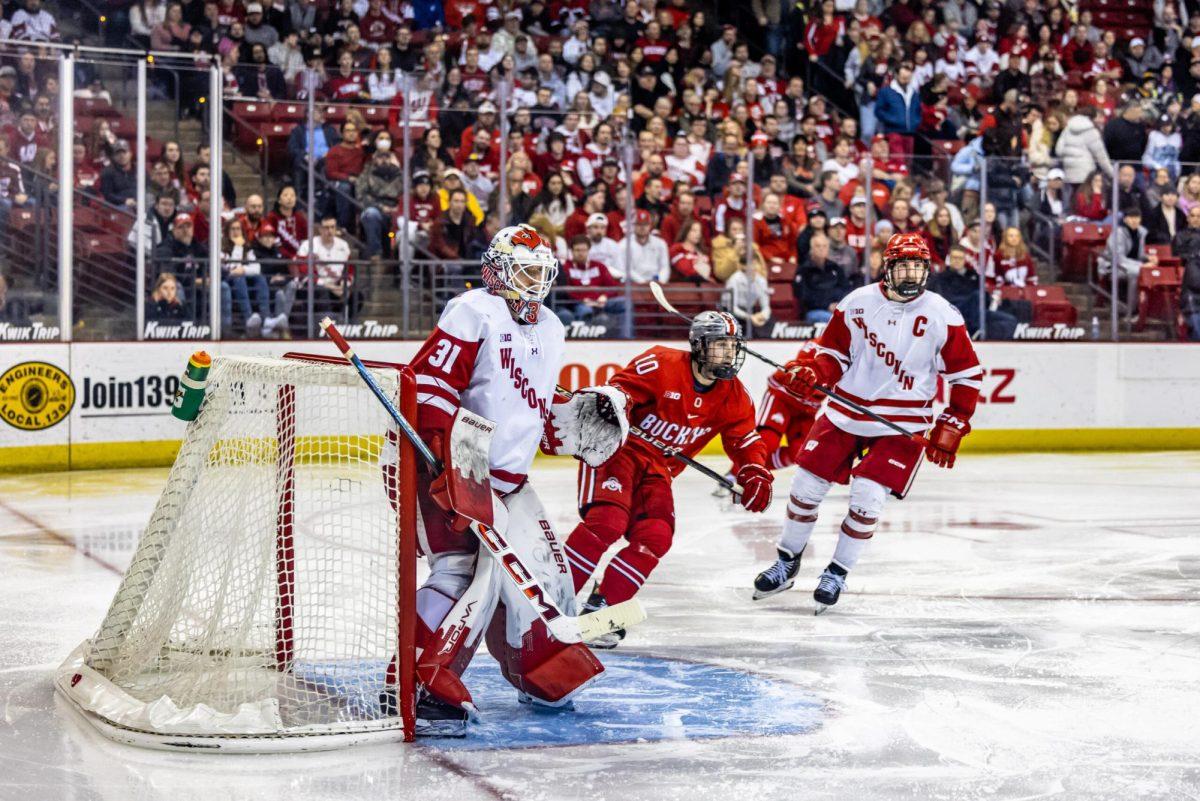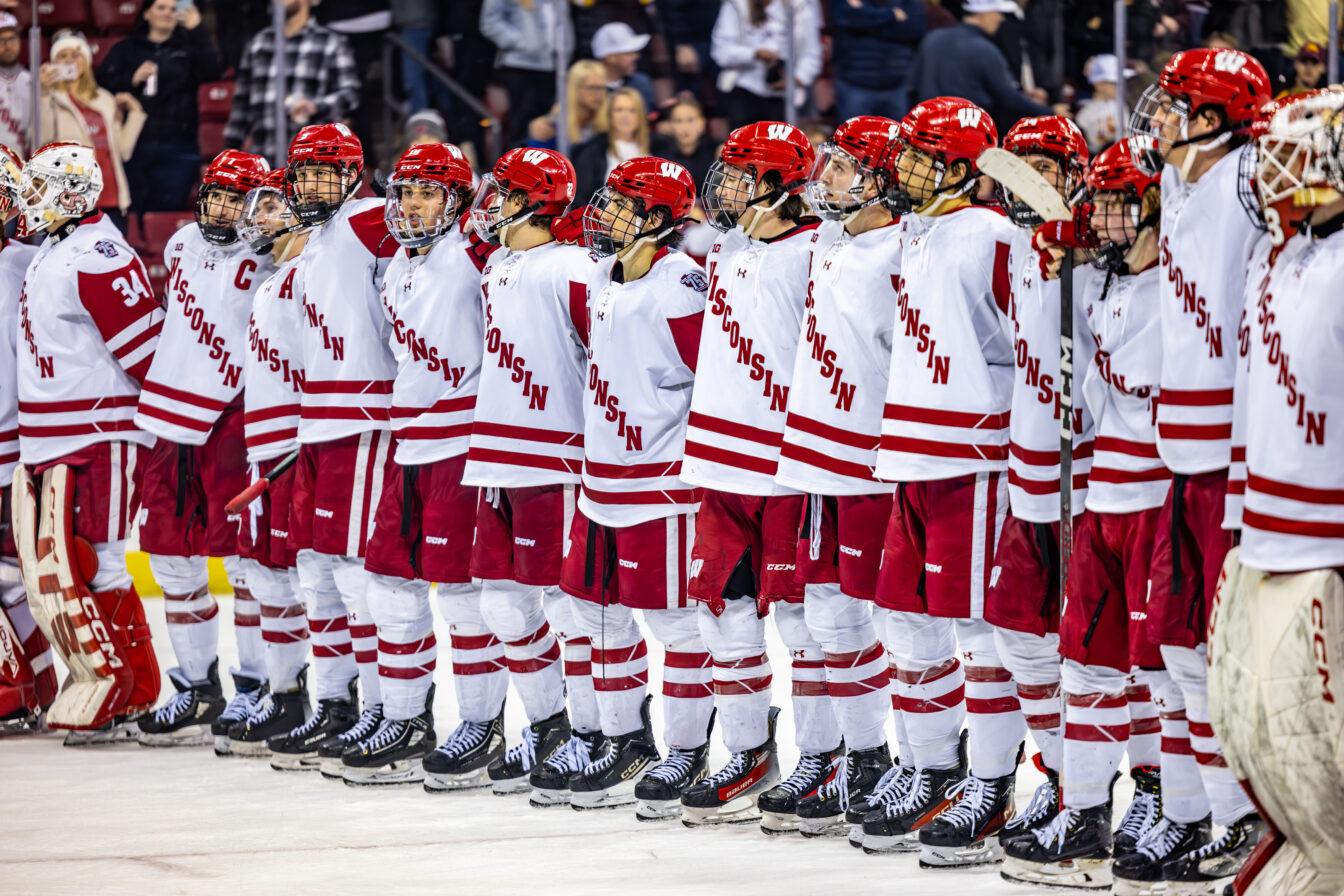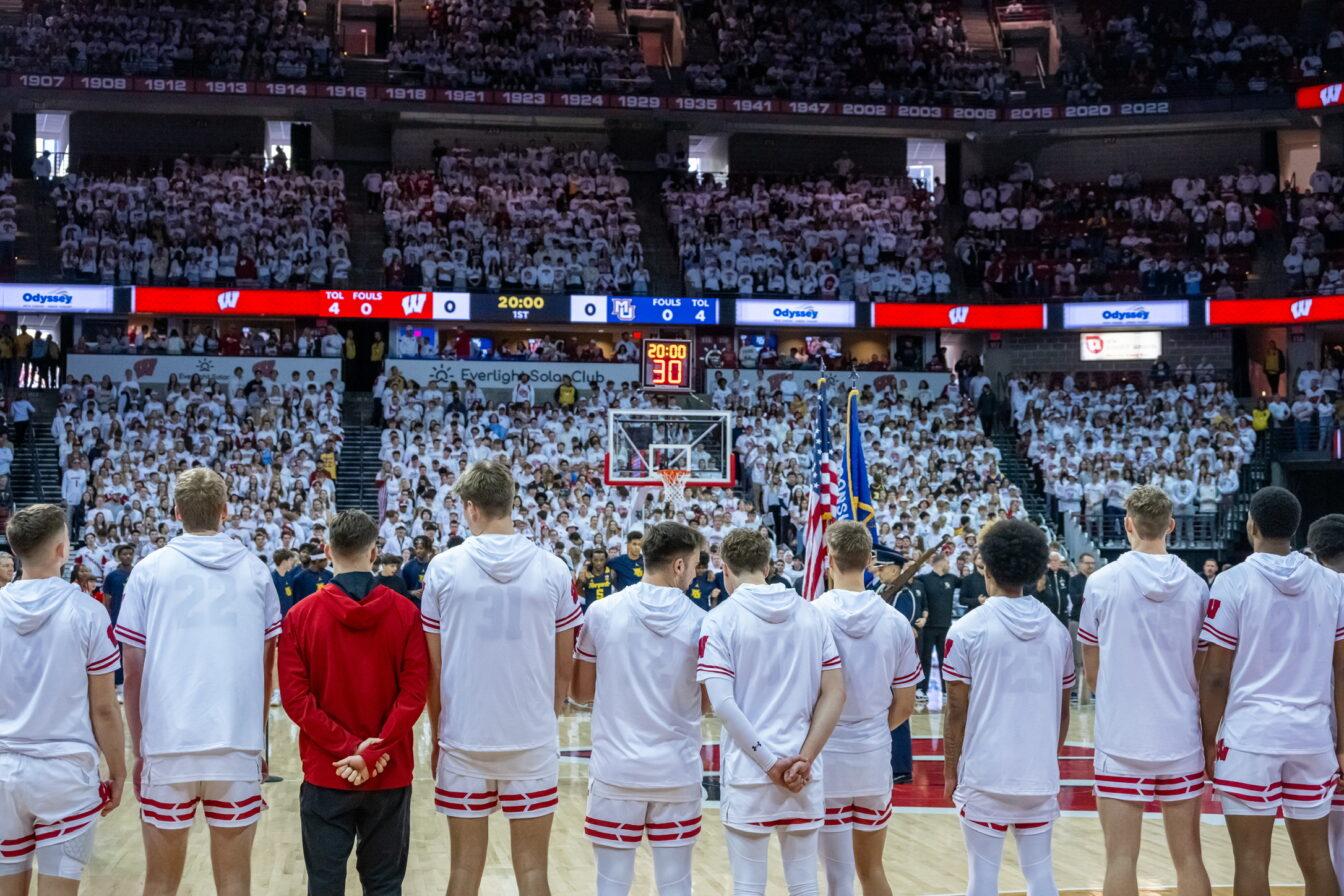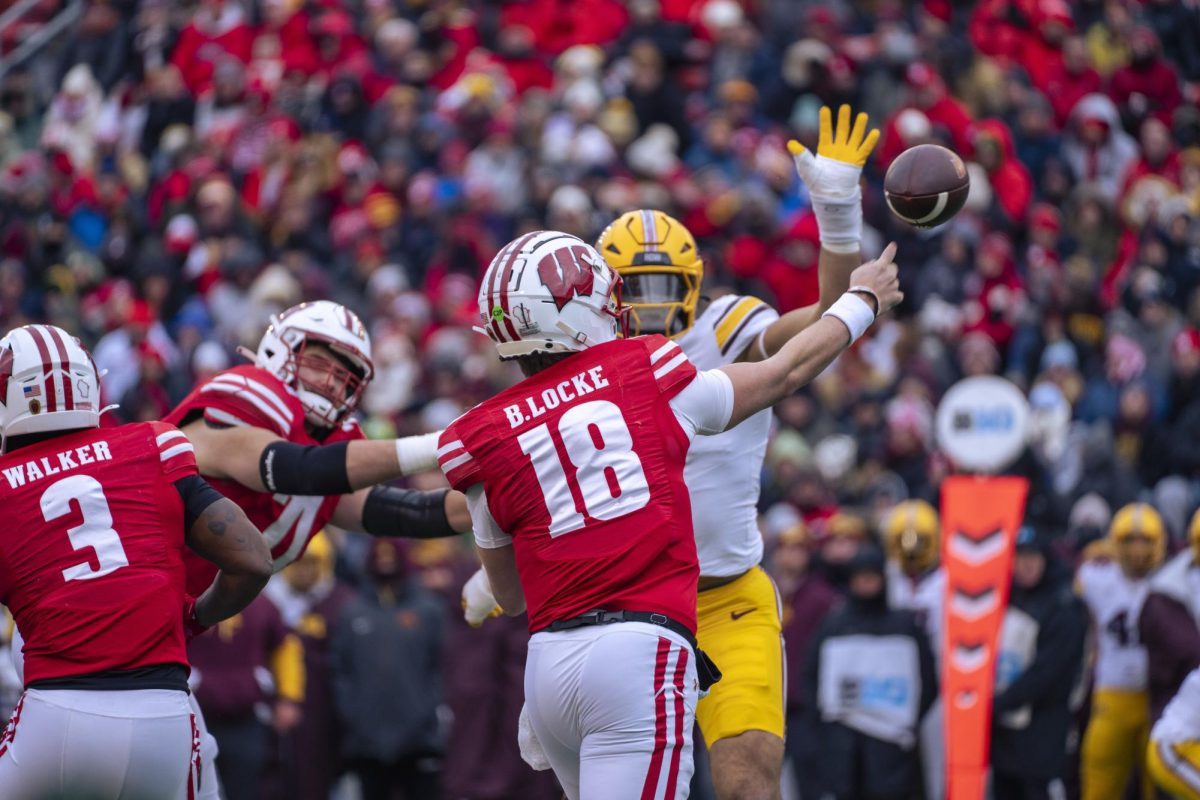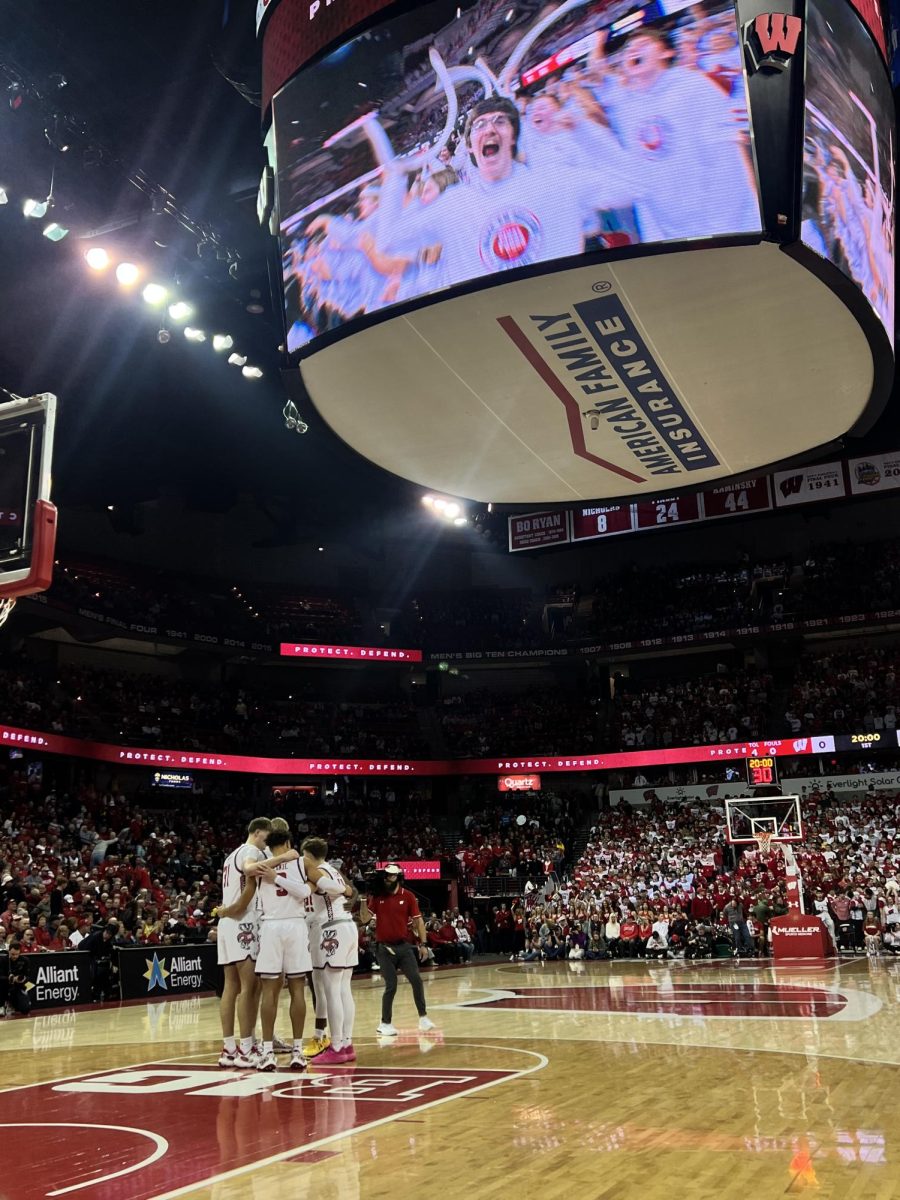
When Derek Stepan decided to forego his final two years of college eligibility, it came as a surprise to many – including his coach.
A second-round pick of the New York Rangers, Stepan said he would stay for his junior season after a sophomore campaign where he led the University of Wisconsin men’s hockey team in scoring with 54 points. In addition to helping the Badgers to the 2010 national title game, he captained Team USA to the gold medal in the World Junior Championships at the beginning of the year, leading all scorers in the tournament with 14 points.
But following the buzz from the WJC, he said he was going to stay, admitting his age – he didn’t turn 20 until last June – and size would factor into him continuing to play for the Badgers.
Then the summer rolled around, and after attending a prospects camp held by the Rangers, things changed.
“I called because I was hearing things, I said, ‘Derek, what’s going on?'” UW head coach Mike Eaves said. “He says, ‘Coach, I’m just meeting with my family, I’m coming back.’ And then when he called … I was taken off guard because it was like, ‘Coach, I’m coming back. Coach, I’m coming back.’ And all of sudden he’s gone.”
Eaves said Stepan told him the Rangers wanted him and that he had a chance to make the team out of camp – an offer that’s hard to refuse, regardless of how legitimate is.
“And sometimes that’s true and sometimes it’s not. But in this case it was,” Eaves said.
As part of a youth movement the Rangers wanted to begin, Stepan was given an opportunity. Of the four UW underclassmen that turned pro following the 2009-2010 season, Stepan might have been the least NHL-ready in terms of physical size. But of those four, he was the only one to start the season in the NHL, rather than in the minor leagues.
“A lot of this world has to do with opportunity and openings. Obviously the Rangers had openings and I had a good opportunity to make the team,” Stepan said in a phone interview.
And in a debut you couldn’t script better, Stepan became only the fourth rookie to score a hat trick in his NHL debut. He finished the regular season fifth among rookies in scoring, with 21 goals and 24 assists.
“When you dream as a kid, in your NHL debut [to] score a hat trick, it’s something that I’ll never forget,” he said.
But while Stepan’s move to the NHL ranks is relatively common, his immediate success at that level is the exception to the rule. While NFL and NBA first- and second-round picks may be expected to contribute right away, that’s not usually the case for NHL picks. Former Badger Jamie McBain was drafted in the second round, played three years at Wisconsin and still spent almost his whole first full season as a pro playing for Carolina’s top minor league affiliate before getting called up for 14 games in 2010. He finally began the 2010-2011 season as a regular with the Hurricanes.
But depending on need and where a player was drafted, an NHL team may put more pressure on a kid to sign sooner. Kyle Turris, the third overall pick in the 2007 draft, joined the Badgers that fall with high expectations and delivered by leading the team in scoring his first season with 35 points.
Predictably, Phoenix drafted Turris with the intent of calling him up soon. Turris and the Coyotes agreed he would turn pro when they asked him to, which ended up being after his freshman season.
“There is, just from a standpoint of if you’re a first- or second-rounder, the whole point of picking you that early is the idea that you’re going to be ready to play at the NHL level faster than the later round picks,” McBain said.
Going one-and-done isn’t especially common in hockey and also begs the question: Why bother?
“It was never a question in my mind that I would play college hockey. Just everything about it, from getting your education while you’re playing, to the level of play – playing against 23, 24-year-olds, being able to be coached by Mike Eaves,” Turris said in a phone interview.
But organizational pressure aside, a player has to consider if he is physically and mentally ready for the leap to the NHL.
In Justin Schultz’s case, being 6-foot-1 and generously listed as 185 pounds, he simply isn’t physically big enough to deal with NHL forwards, something he’s very aware of.
“[Former Badger Jake Gardiner] said it’s not much the speed of the game or anything, but the guys are so much bigger and stronger than you’re used to in college,” Schultz said. “I think that is the biggest reason, I need to be stronger to be ready for that next level.”
Gardiner left this past season after completing his junior year, signing with the Toronto Maple Leafs and playing for their minor league affiliate. And in Gardiner’s case, Eaves was 100-percent behind the decision.
“You watch him play at this level and he can control the pace, he can be successful most of the time doing the things he wants,” Eaves said. “He needs to get up there and play against men and find that next level.”
But not everybody is ready to make the leap when they think they are. Sometimes that means getting familiar with the AHL for a while before ever skating in an NHL game.
Organizations are encouraging their draft picks to sign, but more often than not, they’re playing a year or two in the minor leagues before ever being called up to the NHL – a point with which Eaves has some contention.
“Our kids [are] leaving and going to play in the minor leagues,” Eaves said. “Our kids [are] leaving as sophomores and now they’ve got to try and come back and finish school, that doesn’t make any sense.”
Brendan Smith, a 2007 first-round pick of Detroit, hasn’t been called up yet after leaving in 2010, playing his first pro season for the Grand Rapids Griffins. However, he was the first Griffin to be named to the AHL All-Star team and was named to the AHL all-rookie team after a season where he went 12-20-32 and finished a plus-7.
Classmate Cody Goloubef also gave up his final year of eligibility, and has spent the entire season with the Springfield Falcons, Columbus’ minor league team.
Wisconsin’s other underclassman to leave in 2010, junior Ryan McDonagh, was considered the most NHL-ready of the four, a physically gifted skater who, at 6-foot-1 and 213 pounds, had the body for the game. Drafted 12th overall by Montreal in the 2007 draft, his rights were traded to the Rangers in 2009.
After a difficult decision-making process, he left UW, but played 38 games in the AHL before being called up to the Rangers. Since then, he’s become one of the team’s top defensemen, and in Eaves’ words, looks like he belongs.
All this goes to show, it’s difficult to predict how that decision will turn out.
While Gardiner is so far the only Badger to officially leave this offseason, it was rumored Schultz and fellow junior-to-be Craig Smith could follow, and senior-to-be Jordy Murray is reportedly going to Switzerland to play professionally. But Schultz and Smith reaffirmed their decisions to stay in the end-of-the-year player-coaches meetings.
“I just think coming back here another year and getting stronger, perfecting my game with Coach Eaves and the rest of the coaches really played a huge role in it,” Schultz said. “I think another year here is not going to hurt me at all.”
“Both guys feel that they can get better in some form of their game by coming back. That’s huge, they feel they can develop and they commit themselves to the academic part,” Eaves said. “Because in one play, they could blow their knee out. In one play they could do something to their body that doesn’t allow them to continue. So this becomes their insurance mark, in terms of them being able to decide what they want to do with their life once the hockey is over.”
Check back tomorrow for the third part in this five-part series, and check badgerherald.com/blogs/sports for additional quotes and notes.



